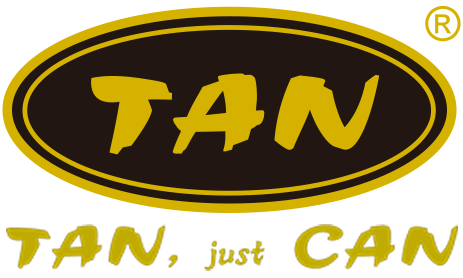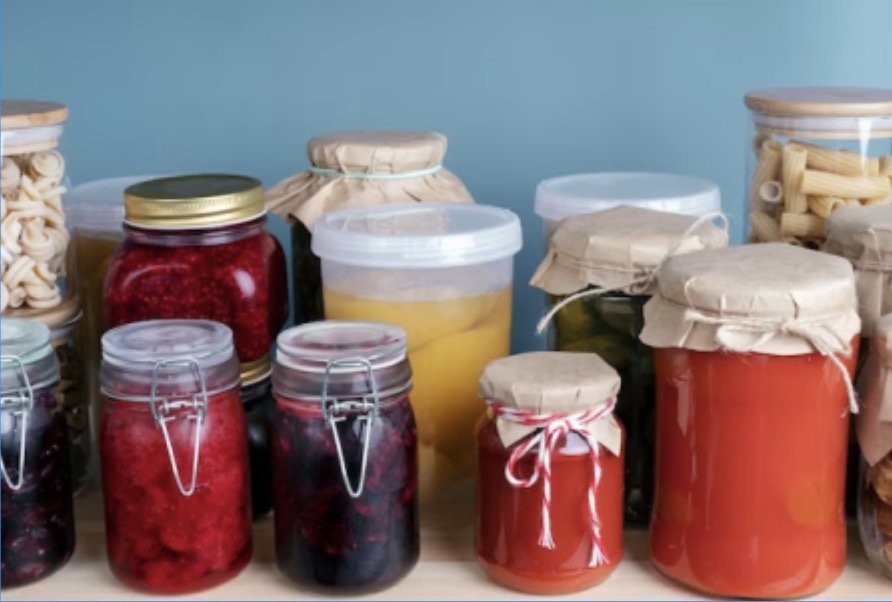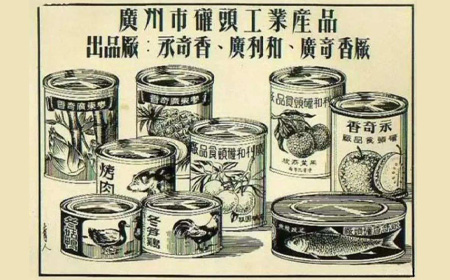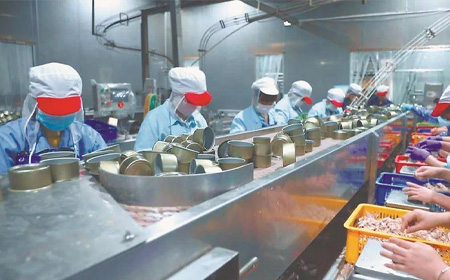To study food safety, we must first study the unsafe factors of food. So far, Chinese and foreign researchers have divided unsafe factors or hazard factors into three categories: biological factors, physical factors, and chemical factors. Among them, biological factors are considered to be the biggest hazard factors, especially for processed foods. In order to eliminate biological hazards, if the method is improper, it is possible to increase physical hazards and chemical hazards during processing. For example, in order to prevent microbial hazards to food, chemical preservatives are added to many processed foods. Excessive addition or abuse of preservatives will undoubtedly increase the risk of chemical hazards to food. It can be seen that the food safety of a processed food is related to its processing technology. In a certain sense, the food processing method determines the safety risks of this type of food.
Since the establishment of microbiology, any food processing and preservation must take into account that microorganisms can cause food spoilage and even food poisoning. Therefore, food sterilization and bacteriostasis have become a very important theoretical basis for various food processing and preservation. Academician Chen Junshi of the Chinese Academy of Engineering in the field of food safety has constantly emphasized that the biggest hazards to food safety currently still come from biological hazards, mainly from bacteria and the toxins they produce.
The growth and reproduction of bacteria require nutrients, water, environmental temperature suitable for their growth, pH value, etc. According to their need for oxygen, they are also divided into aerobic bacteria and anaerobic bacteria. Most bacteria in the environment are aerobic bacteria. Based on these characteristics, in order to effectively control the microbial hazards of food, the U.S. FDA classifies processed foods into high-acid foods, acidified foods and low-acid foods based on their water activity and pH value, and stipulates that foreign low-acid foods and Acidified foods need to be registered and pass safety assessment before they can be exported to the U.S. market.
Based on these characteristics of bacteria, I classify processed foods into two categories, one is bactericidal processed foods, and the other is bacteriostatic processed foods.
This classification has not yet been proposed, but virtually all processed foods currently on the market could be included. Processed foods that do not require registration according to the US FDA, such as foods with water activity below 0.85, high-acid foods, alcoholic beverages, fermented foods, etc., actually achieve antibacterial effects by controlling the conditions for bacterial growth and reproduction in foods. Processed food, this type of antibacterial processing method also includes salt curing, vacuum freeze drying, low-temperature sterilization of food with added food preservatives, etc.
Based on the environmental temperature requirements of food during the commodity circulation process, processed food can be divided into normal temperature food and cold chain food. Cold chain food achieves the effect of inhibiting bacteria by controlling the temperature at which bacteria grow and reproduce. It is a bacteriostatic processed food. For processed foods circulated at room temperature, in order to achieve a longer shelf life, a common method is to use both sterilization and bacteriostasis. The most common sterilization method at present is thermal sterilization, or high-temperature sterilization that kills even spores, or atmospheric pressure sterilization, which kills bacteria that can be inactivated at 100 degrees Celsius, and then controls the pH value, water activity, and adds preservatives. agents to achieve a certain shelf life. From a safety perspective, these food processing methods can ensure food safety as long as they are operated according to specifications. But it can always be divided into safety levels, or risk levels. Although lowering the pH value is effective, the application range is naturally subject to certain restrictions. In order to alleviate the discomfort caused by the sour taste, it is often necessary to increase the sugar content of the food and adjust the sugar-acid ratio to achieve palatable purposes; since ancient times, it has been dried or salted through The antibacterial food processing and preservation method that reduces water activity also has its limitations. After all, the diet of relying on dried pickles has gradually drifted away from the development of today's society; and the antibacterial type with the largest sales volume and the most varieties currently on the market Processed foods are foods with added preservatives.
According to the discussion of authoritative experts, it is safe to use food preservatives according to regulations, but experts also point out that the abuse of food preservatives can cause food safety problems. What is "abuse"? Many foods have two or three preservatives added at the same time. Although they do not exceed the national standards, judging from the preservative dosage, it can be understood that they exceed the standard. According to China's current standards, this category does not seem to be classified as "abuse." Category; and assuming that the dosage of a preservative exceeds the standard, even if only one preservative is used, the dosage exceeds the standard, this is judged as "abuse". Such standards are indeed difficult to understand. At present, a large number of processed foods have two or more preservatives added at the same time. Regardless of whether this status quo is "abuse", I believe that the food safety risk must be higher than that of foods without preservatives.
Regarding the safety of food preservatives, I only believe that there are risks based on normal logic. First of all, it is an indisputable fact that preservatives have an inhibitory effect on bacteria, otherwise they cannot be used as preservatives; secondly, it can be believed that a certain dose of preservatives does not directly cause harm to the human body. The question is: Are there indirect hazards? Various flora in the digestive tract maintain a certain ecological balance. The human body consumes a large amount of processed foods containing preservatives. These preservatives will also have an antibacterial effect on normal intestinal bacteria, and the balance of intestinal flora will be affected. Influence. It can be deduced from this that the human body's ingestion of preservatives will have the risk of causing intestinal flora disturbance. This risk may be small, but it certainly exists. Therefore, the conclusion is that food processing methods that do not require the use of preservatives have a higher food safety level than food processing methods that use preservatives.
Based on the above points of view, I am fortunate to find that the two major categories of food processing methods engaged in by Lixing Company are undoubtedly the safest. One is canned food, which adopts the method of vacuum sealing and sterilization after canning. It can maintain a long shelf life at room temperature without adding preservatives; the other type of food is a typical product that combines sterilization and bacteriostasis - vacuum freezing. Snack food processed by dry method.
A large number of facts can also support the conclusion that "canned food is the safest" - as of the end of 2015, China has exported a total of 50 million tons of canned food since the founding of the People's Republic of China, with a cumulative export volume of more than 60 billion US dollars, and there has not been a single major food safety incident. ; Canned food is the earliest food exported to developed countries from China. The production process and quality standards are naturally the first to be in line with international standards. The relevant standards implemented in the production process are all derived from the standard requirements of developed countries. The food safety management level is undoubtedly "international". Level"; in the ranking of China's main export markets for canned food over the years, the United States, Japan, and the European Union have all ranked in the top three, which fully demonstrates that the food safety of China's exported canned goods is equal to that of Europe, the United States, and Japan and has been recognized by each other.
The safety of canned food actually does not need to be "browed only by selling melons." Canned food accounts for more than half of the food prepared for astronauts on China's first manned spacecraft. An uninformed person would think that it was specially made and must be safe. In fact, according to the requirements of China's inspection and quarantine department, any factory that can export canned food can produce canned food for astronauts to eat in space.
[Author: Lin Jieben, chairman of Lixing Group, concurrently serves as deputy director of the Canned Food Science and Technology Working Committee of the China Food Association and president of the Zhangzhou Canned Food Chamber of Commerce. This article is excerpted from the 6th issue of "Canned Food" in 2015. The original article title is: "Looking at the canned food industry from the perspective of food safety"]
It is currently popular to conduct graded assessments of potential risks. So, among the many processed foods currently available, which type of food has the smallest safety risk?
Food processing is the basis for food commercialization and a manifestation of human civilization. It requires that the commodity characteristics of food, such as nutrition, flavor, taste, and shelf life, be maintained to the greatest extent while ensuring food safety. Among them, the shelf life of food is the most important commodity characteristic of processed food. In order to extend the shelf life or shelf life of food, humans have long invented various food processing and storage methods, such as pickling, drying, fermentation, freezing, etc. The processing and storage methods of these foods cannot meet the needs of human social activities. Therefore, the French invented canning more than two hundred years ago. After several developments, it has endured and has become the main form of international trade in processed foods today.Since the establishment of microbiology, any food processing and preservation must take into account that microorganisms can cause food spoilage and even food poisoning. Therefore, food sterilization and bacteriostasis have become a very important theoretical basis for various food processing and preservation. Academician Chen Junshi of the Chinese Academy of Engineering in the field of food safety has constantly emphasized that the biggest hazards to food safety currently still come from biological hazards, mainly from bacteria and the toxins they produce.
The growth and reproduction of bacteria require nutrients, water, environmental temperature suitable for their growth, pH value, etc. According to their need for oxygen, they are also divided into aerobic bacteria and anaerobic bacteria. Most bacteria in the environment are aerobic bacteria. Based on these characteristics, in order to effectively control the microbial hazards of food, the U.S. FDA classifies processed foods into high-acid foods, acidified foods and low-acid foods based on their water activity and pH value, and stipulates that foreign low-acid foods and Acidified foods need to be registered and pass safety assessment before they can be exported to the U.S. market.
Based on these characteristics of bacteria, I classify processed foods into two categories, one is bactericidal processed foods, and the other is bacteriostatic processed foods.
This classification has not yet been proposed, but virtually all processed foods currently on the market could be included. Processed foods that do not require registration according to the US FDA, such as foods with water activity below 0.85, high-acid foods, alcoholic beverages, fermented foods, etc., actually achieve antibacterial effects by controlling the conditions for bacterial growth and reproduction in foods. Processed food, this type of antibacterial processing method also includes salt curing, vacuum freeze drying, low-temperature sterilization of food with added food preservatives, etc.
Based on the environmental temperature requirements of food during the commodity circulation process, processed food can be divided into normal temperature food and cold chain food. Cold chain food achieves the effect of inhibiting bacteria by controlling the temperature at which bacteria grow and reproduce. It is a bacteriostatic processed food. For processed foods circulated at room temperature, in order to achieve a longer shelf life, a common method is to use both sterilization and bacteriostasis. The most common sterilization method at present is thermal sterilization, or high-temperature sterilization that kills even spores, or atmospheric pressure sterilization, which kills bacteria that can be inactivated at 100 degrees Celsius, and then controls the pH value, water activity, and adds preservatives. agents to achieve a certain shelf life. From a safety perspective, these food processing methods can ensure food safety as long as they are operated according to specifications. But it can always be divided into safety levels, or risk levels. Although lowering the pH value is effective, the application range is naturally subject to certain restrictions. In order to alleviate the discomfort caused by the sour taste, it is often necessary to increase the sugar content of the food and adjust the sugar-acid ratio to achieve palatable purposes; since ancient times, it has been dried or salted through The antibacterial food processing and preservation method that reduces water activity also has its limitations. After all, the diet of relying on dried pickles has gradually drifted away from the development of today's society; and the antibacterial type with the largest sales volume and the most varieties currently on the market Processed foods are foods with added preservatives.
According to the discussion of authoritative experts, it is safe to use food preservatives according to regulations, but experts also point out that the abuse of food preservatives can cause food safety problems. What is "abuse"? Many foods have two or three preservatives added at the same time. Although they do not exceed the national standards, judging from the preservative dosage, it can be understood that they exceed the standard. According to China's current standards, this category does not seem to be classified as "abuse." Category; and assuming that the dosage of a preservative exceeds the standard, even if only one preservative is used, the dosage exceeds the standard, this is judged as "abuse". Such standards are indeed difficult to understand. At present, a large number of processed foods have two or more preservatives added at the same time. Regardless of whether this status quo is "abuse", I believe that the food safety risk must be higher than that of foods without preservatives.
Regarding the safety of food preservatives, I only believe that there are risks based on normal logic. First of all, it is an indisputable fact that preservatives have an inhibitory effect on bacteria, otherwise they cannot be used as preservatives; secondly, it can be believed that a certain dose of preservatives does not directly cause harm to the human body. The question is: Are there indirect hazards? Various flora in the digestive tract maintain a certain ecological balance. The human body consumes a large amount of processed foods containing preservatives. These preservatives will also have an antibacterial effect on normal intestinal bacteria, and the balance of intestinal flora will be affected. Influence. It can be deduced from this that the human body's ingestion of preservatives will have the risk of causing intestinal flora disturbance. This risk may be small, but it certainly exists. Therefore, the conclusion is that food processing methods that do not require the use of preservatives have a higher food safety level than food processing methods that use preservatives.
Based on the above points of view, I am fortunate to find that the two major categories of food processing methods engaged in by Lixing Company are undoubtedly the safest. One is canned food, which adopts the method of vacuum sealing and sterilization after canning. It can maintain a long shelf life at room temperature without adding preservatives; the other type of food is a typical product that combines sterilization and bacteriostasis - vacuum freezing. Snack food processed by dry method.
A large number of facts can also support the conclusion that "canned food is the safest" - as of the end of 2015, China has exported a total of 50 million tons of canned food since the founding of the People's Republic of China, with a cumulative export volume of more than 60 billion US dollars, and there has not been a single major food safety incident. ; Canned food is the earliest food exported to developed countries from China. The production process and quality standards are naturally the first to be in line with international standards. The relevant standards implemented in the production process are all derived from the standard requirements of developed countries. The food safety management level is undoubtedly "international". Level"; in the ranking of China's main export markets for canned food over the years, the United States, Japan, and the European Union have all ranked in the top three, which fully demonstrates that the food safety of China's exported canned goods is equal to that of Europe, the United States, and Japan and has been recognized by each other.
The safety of canned food actually does not need to be "browed only by selling melons." Canned food accounts for more than half of the food prepared for astronauts on China's first manned spacecraft. An uninformed person would think that it was specially made and must be safe. In fact, according to the requirements of China's inspection and quarantine department, any factory that can export canned food can produce canned food for astronauts to eat in space.
[Author: Lin Jieben, chairman of Lixing Group, concurrently serves as deputy director of the Canned Food Science and Technology Working Committee of the China Food Association and president of the Zhangzhou Canned Food Chamber of Commerce. This article is excerpted from the 6th issue of "Canned Food" in 2015. The original article title is: "Looking at the canned food industry from the perspective of food safety"]
Contact Us
Your email address will not be published. Required fields are marked*





